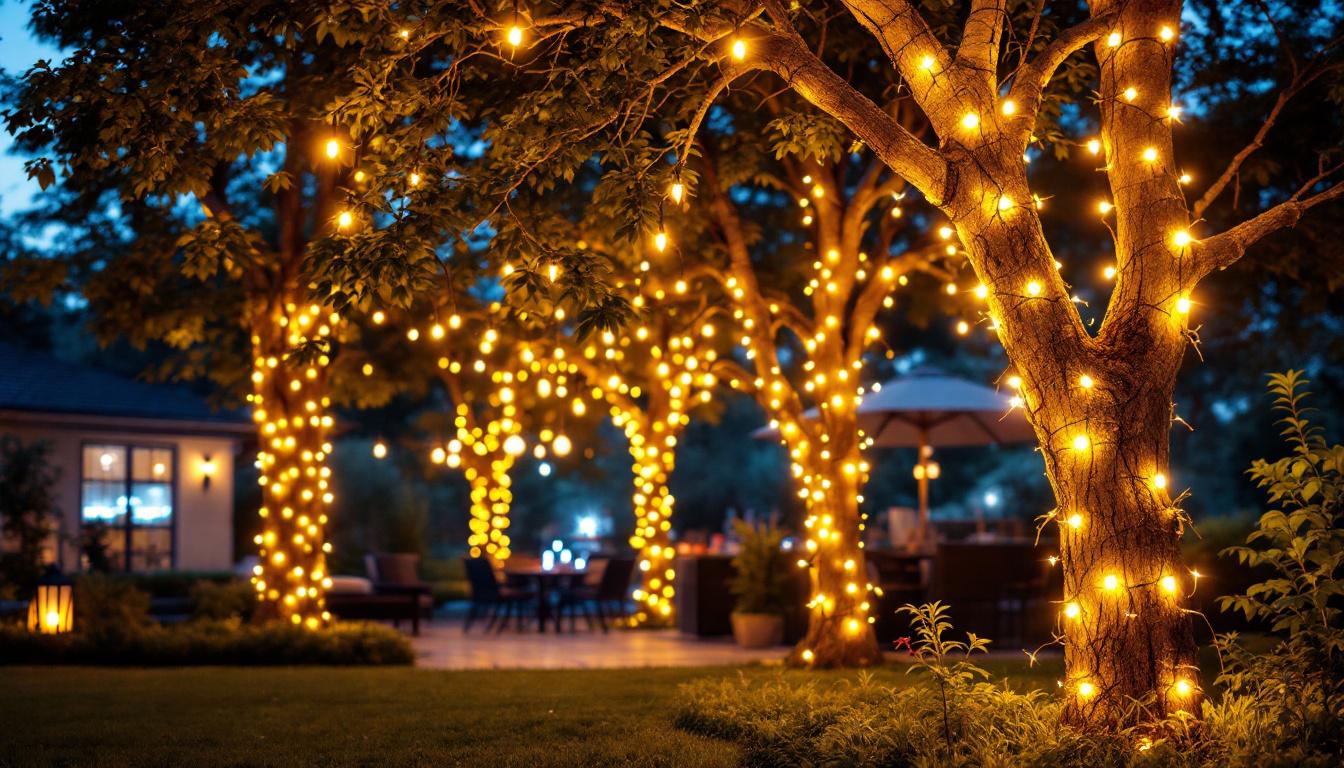
As the world transitions to more energy-efficient solutions, LED can lights have emerged as a popular choice for both residential and commercial lighting. For lighting contractors, understanding the importance of LED can light replacement is crucial for staying competitive and meeting client demands. This article delves into the various aspects of LED can light replacement, highlighting its significance in the industry.
The lighting industry has undergone a significant transformation with the advent of LED technology. Unlike traditional incandescent or fluorescent lights, LED lights offer numerous advantages, including energy efficiency, longevity, and lower heat output. As a result, many contractors are now faced with the task of replacing outdated lighting systems with modern LED solutions.
One of the most compelling reasons for switching to LED can lights is their energy efficiency. LED lights consume significantly less power compared to their incandescent counterparts, often using up to 80% less energy. This reduction in energy consumption translates to lower utility bills for clients, making it an attractive selling point for contractors.
Moreover, energy-efficient lighting solutions contribute to a smaller carbon footprint, aligning with the growing demand for sustainable practices in construction and renovation. By promoting LED can light replacements, contractors can position themselves as environmentally conscious professionals, which is increasingly appealing to clients. In addition, many governments and local authorities offer incentives and rebates for businesses that adopt energy-efficient technologies, providing further financial motivation for clients to make the switch to LED.
LED lights boast an impressive lifespan, often lasting 25,000 hours or more. In contrast, traditional lighting solutions may require replacement every few months or years. For contractors, this longevity means fewer callbacks for maintenance and replacements, allowing for better project management and increased profitability.
Clients appreciate the reduced maintenance associated with LED lights, as they do not have to worry about frequent bulb changes or the costs associated with them. This reliability enhances customer satisfaction and can lead to repeat business and referrals, further benefiting contractors in the long run. Additionally, the durability of LED technology means that these lights are less prone to breakage and can withstand harsher conditions, making them ideal for both indoor and outdoor applications. This versatility allows contractors to offer LED solutions in a wider range of settings, from residential homes to commercial spaces, thereby expanding their service offerings and potential client base.
Replacing traditional can lights with LED options involves several steps that contractors must be familiar with. A thorough understanding of the replacement process ensures that installations are efficient, safe, and compliant with local regulations.
The first step in the replacement process is assessing the existing fixtures. Contractors must evaluate the current lighting system to determine compatibility with LED replacements. This includes checking the dimensions of the can lights, the type of housing, and the electrical connections.
In some cases, retrofitting existing fixtures may be possible, allowing contractors to upgrade to LED technology without a complete overhaul. However, in other situations, it may be more efficient to replace the entire fixture. Understanding these nuances is essential for providing clients with the best options.
With a wide variety of LED can lights available on the market, selecting the right products for a specific project can be challenging. Contractors must consider factors such as color temperature, brightness (measured in lumens), and beam angle to ensure that the new lighting meets the client’s needs.
Additionally, understanding the differences between retrofit kits and complete fixtures is crucial. Retrofit kits can provide a cost-effective solution for upgrading existing fixtures, while complete fixtures may offer enhanced features and aesthetics. Contractors should stay informed about the latest products and technologies to make informed recommendations to their clients.
When replacing can lights with LED options, compliance with local building codes and safety regulations is paramount. Lighting contractors must be aware of the relevant standards to ensure that installations are safe and legal.
Each region may have specific codes governing electrical installations, including lighting. Contractors need to familiarize themselves with these regulations to avoid potential fines or safety hazards. Compliance not only protects the contractor but also ensures the safety of the end-users.
Staying updated on changes in building codes and energy efficiency standards is essential for contractors who wish to remain competitive in the market. Regular training and education can help contractors stay informed about these critical aspects of their work.
Safety should always be a top priority during any lighting installation. Contractors must adhere to safety protocols to protect themselves and their clients. This includes using appropriate personal protective equipment (PPE), following electrical safety guidelines, and ensuring that all installations are performed in accordance with manufacturer instructions.
Proper training in handling electrical components and understanding potential hazards can significantly reduce the risk of accidents on the job site. By prioritizing safety, contractors not only protect themselves but also build trust with their clients, enhancing their professional reputation.
While the initial investment in LED can light replacements may be higher than traditional lighting solutions, the long-term savings can be substantial. Contractors should be prepared to discuss the cost implications with clients to help them make informed decisions.
The upfront costs of LED fixtures and installation can be a concern for some clients. However, it is essential to emphasize the long-term savings associated with reduced energy consumption and lower maintenance costs. Over time, these savings can offset the initial investment, making LED replacements a financially sound choice.
Providing clients with a detailed cost analysis that outlines potential savings can help alleviate concerns about the upfront costs. This transparency fosters trust and demonstrates the contractor’s commitment to providing value.
Many regions offer incentives or rebates for energy-efficient lighting upgrades, including LED can light replacements. Contractors should be knowledgeable about available programs and assist clients in navigating the application process. This added service can enhance the contractor’s value proposition and encourage clients to proceed with the upgrade.
By highlighting these financial incentives, contractors can further motivate clients to invest in LED technology, ultimately benefiting both parties.
Beyond energy efficiency and cost savings, LED can lights offer aesthetic benefits that can enhance the overall look and feel of a space. Contractors should consider how these lighting solutions can be used creatively to improve interior design.
LED can lights come in various styles, colors, and brightness levels, allowing for versatile design options. Whether clients are looking for a warm, inviting atmosphere or a bright, modern look, there is an LED solution to meet their needs.
Contractors can work with clients to create customized lighting plans that highlight architectural features, artwork, or specific areas of a room. This collaborative approach not only enhances the client’s satisfaction but also showcases the contractor’s expertise in lighting design.
Many LED can lights are compatible with smart home technology, allowing clients to control their lighting remotely or set schedules. This integration can add a layer of convenience and sophistication to a space, making it more appealing to tech-savvy clients.
Contractors who are knowledgeable about smart lighting options can position themselves as experts in modern lighting solutions, attracting a broader client base and increasing project opportunities.
The trend toward LED lighting is not just a passing phase; it represents a fundamental shift in how lighting is approached in both residential and commercial settings. For lighting contractors, embracing this change is essential for future success.
As technology continues to evolve, new LED products and innovations will emerge. Contractors must stay informed about industry trends and advancements to remain competitive. This may involve attending trade shows, participating in workshops, or subscribing to industry publications.
By staying ahead of the curve, contractors can offer clients the latest solutions and maintain their reputation as industry leaders. This proactive approach can lead to increased business opportunities and long-term success.
Ultimately, the key to success in the lighting industry lies in building strong, long-term relationships with clients. By providing exceptional service, expert advice, and high-quality installations, contractors can foster loyalty and repeat business.
As clients become increasingly aware of the benefits of LED can light replacements, contractors who have established trust and credibility will be well-positioned to capitalize on this growing demand. Investing in client relationships can yield significant returns, both in terms of revenue and reputation.
LED can light replacement is not just a trend; it is a vital aspect of modern lighting solutions that lighting contractors must embrace. By understanding the benefits of LED technology, the replacement process, compliance considerations, and cost implications, contractors can position themselves as knowledgeable professionals in the field.
As the industry continues to evolve, staying informed about the latest trends and technologies will be essential for long-term success. By prioritizing energy efficiency, aesthetics, and client relationships, contractors can thrive in an increasingly competitive market, ensuring that they remain a valuable resource for their clients.
In conclusion, the shift to LED can lights represents a significant opportunity for lighting contractors to enhance their services, improve client satisfaction, and contribute to a more sustainable future. Embracing this change will not only benefit contractors but also their clients and the environment as a whole.
Ready to lead the charge in energy-efficient lighting solutions? LumenWholesale is your go-to source for spec-grade LED can lights that will set your projects apart. With unbeatable wholesale prices and a commitment to quality, we offer an extensive selection of lighting products that meet the highest industry standards. Say goodbye to inflated markups and hello to hassle-free bulk buying with free shipping. Elevate your lighting game and give your clients the best value by choosing Wholesale Lighting at the Best Value with LumenWholesale.

Discover the top wall light bulb mistakes lighting contractors make and learn expert tips to avoid costly errors.

Explore the benefits and drawbacks of solar patio lights for lighting contractors.

Discover how commercial exterior solar lighting can revolutionize cost management for lighting contractors.

Illuminate your outdoor spaces with style and efficiency! Discover the ultimate guide to LED outdoor string lighting, covering everything from installation tips to design ideas and energy-saving benefits.